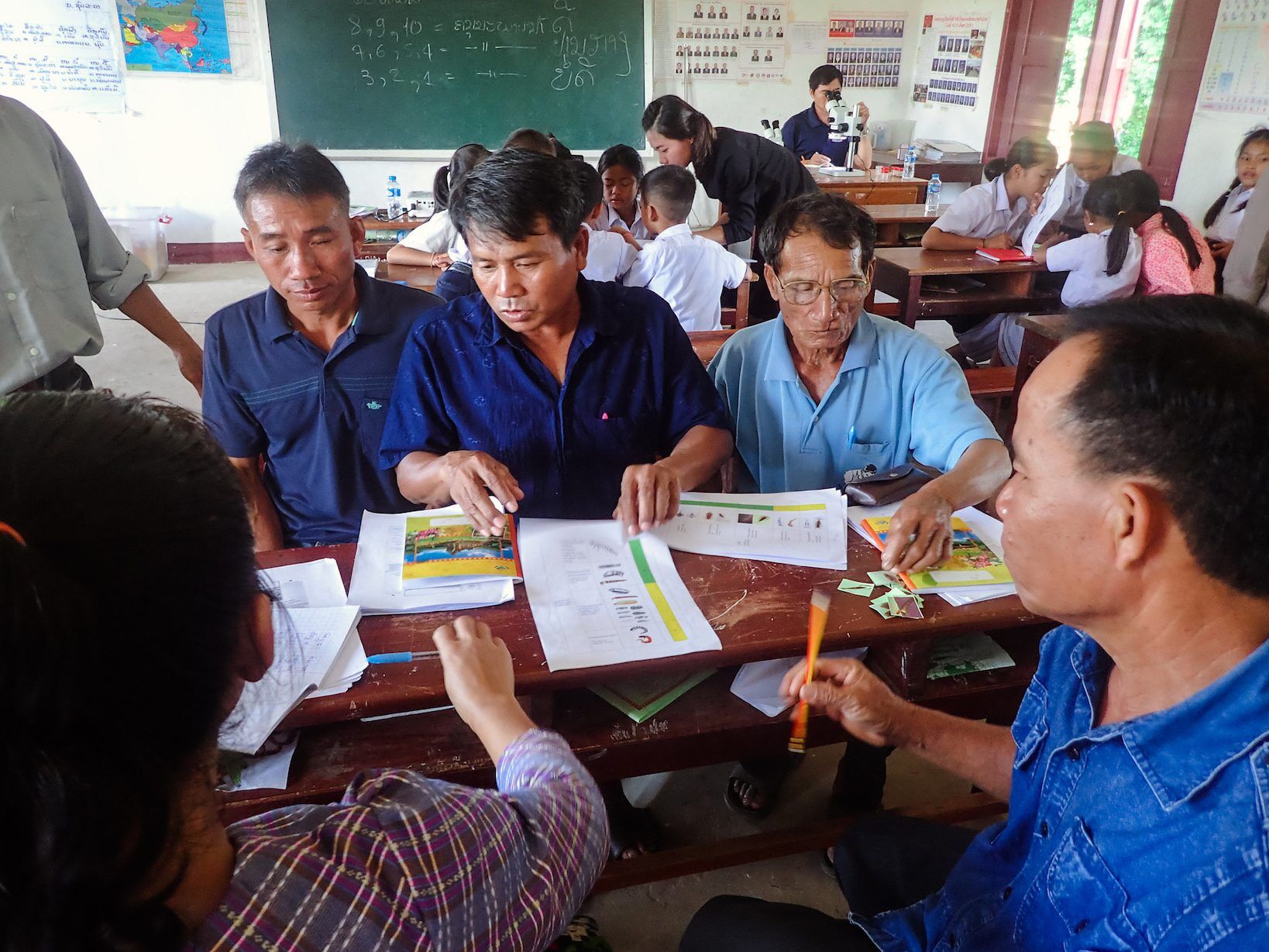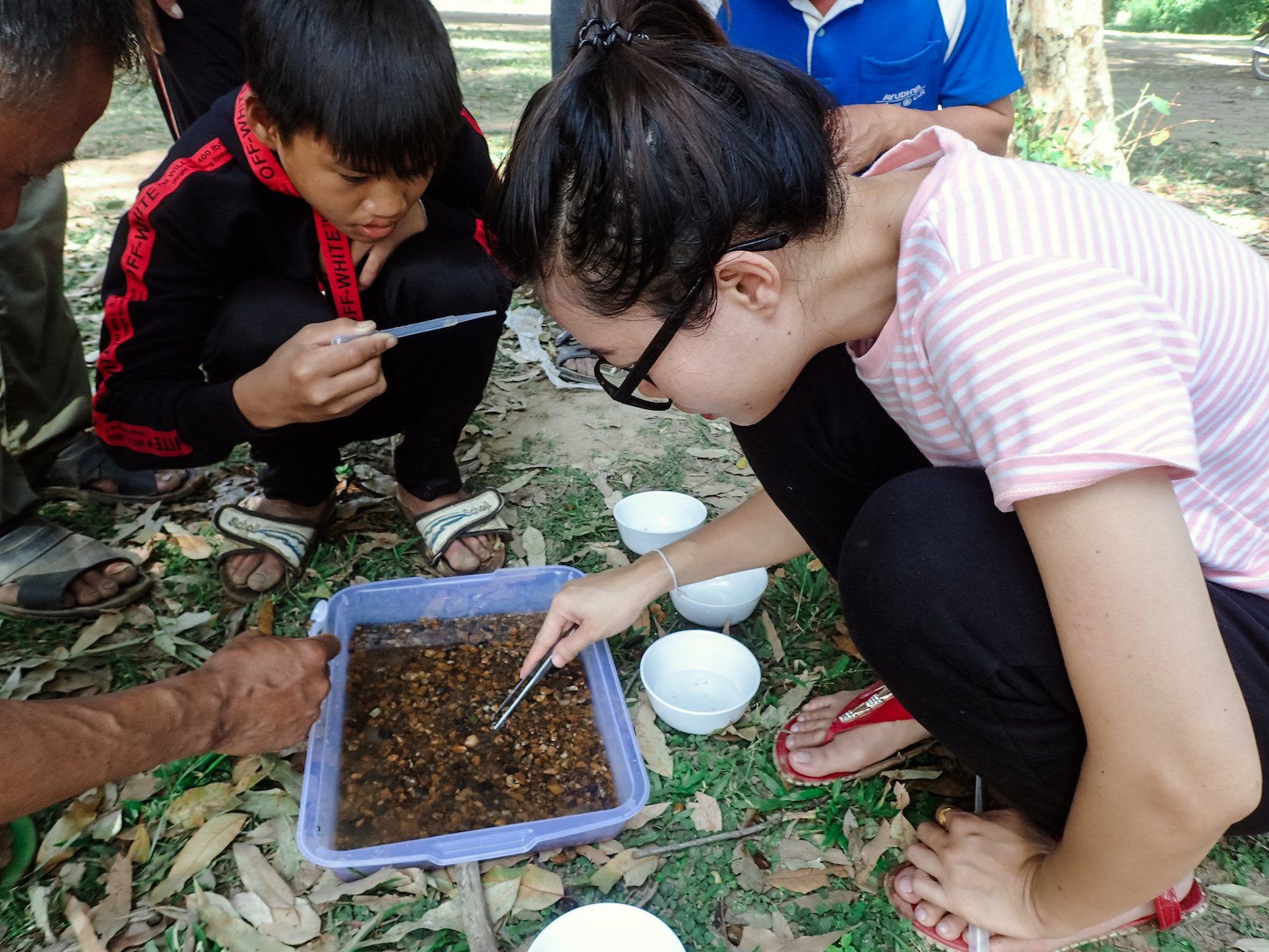Wednesday August 22, 2018

Water bugs, also known as macroinvertebrates, are insects and other aquatic animals that can be found everywhere in rivers, streams, wetlands and ponds in Lao PDR. Macroinvertebrates are not only a traditional food for Lao people, they can also be used as biological indicators to assess water quality. Currently, many human activities can affect aquatic ecosystems by causing negative impacts on water quality and aquatic foods used by local people. In the Xebangfai River, some of these activities include sand mining, the use of chemical fertilizers and pesticides in agriculture, construction of hydropower and industrial factories near the Xebangfai mainstream and its tributaries. In light of these developments, a water quality monitoring project supported by The Asia Foundation with assistance from FISHBIO has been introduced to communities in this region in order to address water quality issues along the Xebangfai River. The project is implemented in the three villages of Napork, Nyangkham and Hadkhamhieng of Xebangfai District, Khammouane Province.

As part of the project framework, macroinvertebrates are used as indicators for water quality monitoring. The project aims to introduce new knowledge and experiences of macroinvertebrate monitoring from previous projects in Vientiane Province, as well as Bolikhamxay Province in the Xebangfai River Basin. Participants that include village volunteers, primary school teachers, and government staff from the District Office of Natural Resource and Environment (DONRE) have been intensively trained in a step-by-step course using a Training of Trainers approach, in which some participants train others. During this training, participants learn how to identify three main categories of macroinvertebrates. The “Green” group represents sensitive species that indicate good water quality because they need high levels of dissolved oxygen to survive. The “Yellow” group represents moderate species that indicate either good or fair water quality conditions, and the “Red” group represents tolerant species that can be found in good, fair, or poor water quality. Identifying which types of macroinvertebrates are present in their waterways can help local people assess the condition of their water. At the end of this project, the results of macroinvertebrate data collection through community participation will be useful as a reference for using aquatic species to interpret the level of impacts on water quality in the river systems in Laos.


